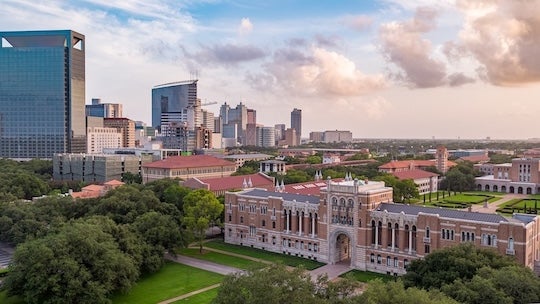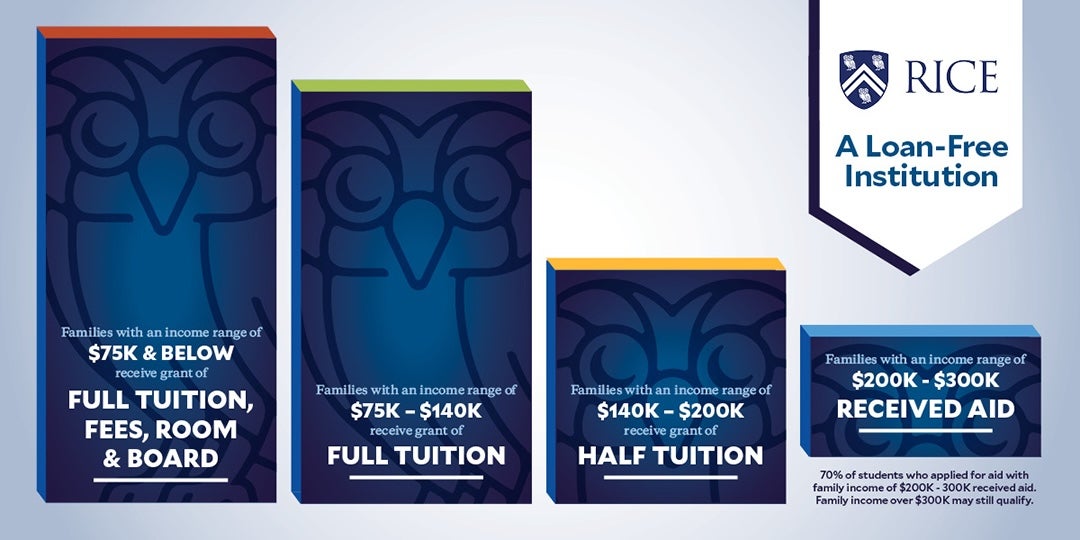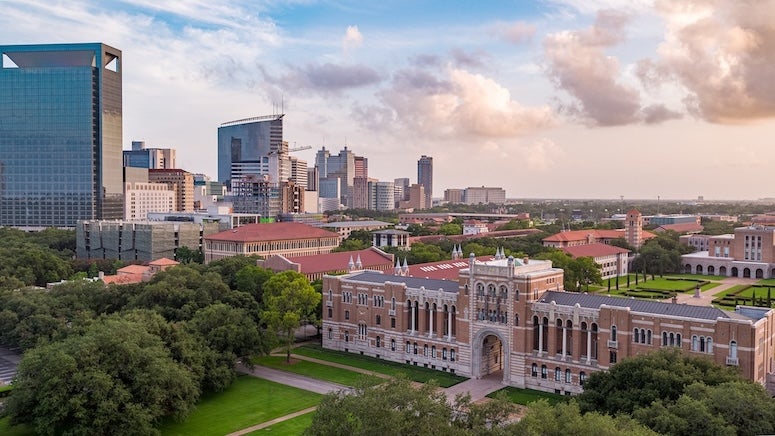In a drive to sustain academic excellence and ensure accessibility for all deserving students while expanding its competitiveness as a top global institution, Rice University announced undergraduate tuition rates for the next two years while bolstering efforts to provide the robust array of financial aid options available to students and their families.

Undergraduate tuition for incoming first-year students in the 2024-25 school year will increase $5,664 over the current year. Current and continuing students will not be affected by this increase. Their tuition will rise in line with previous years and by $2,574. Nearly half of continuing Rice students will not have a tuition increase due to university aid. Rice will maintain its position well below the average tuition of peer institutions.
“Providing student-centric and personalized education and development while meeting the increasing needs of our students is our top priority,” Provost Amy Dittmar said. “Rice is committed to maintaining our competitive position and has ambitions to advance our standing as a world-leading teaching and research university, and school of choice.”
The university expects the total amount spent on aid will be its highest ever and plans to invest approximately $160 million in total grant aid in fiscal year 2025, an increase from the nearly $150 million in undergraduate scholarships and financial aid in fiscal year 2024.
“Rice provides aid to nearly two-thirds of students through both need-based and merit-based financial aid, which means two-thirds of Rice students don’t pay full price,” said Yvonne Romero da Silva, vice president for enrollment. “Generous financial aid packages will continue to play a pivotal role in ensuring that the doors to a world-class Rice education remain open to all deserving students. The Rice Investment, made possible by the generosity of our donors, is a large part of that support.”

Undergraduate tuition for new students in the 2024-25 school year will be $62,874, $18,094 for on-campus room and board and $925 in mandatory fees. For continuing students, tuition will be $59,784.
For the 2025-26 school year, undergraduate tuition will then increase by $3,666 to $66,540 for first- and second-year students and by $2,690 to $62,474 for upperclassmen.
Rice recognizes the financial challenges faced by students and their families and will continue to meet the full financial need of qualified, admitted students and provide loan-free aid.
The Rice Investment, the university’s leading financial aid program for domestic students, provides for students with family incomes below $75,000 to pay no tuition, mandatory fees, room and board; students with family incomes between $75,000 and $140,000 to pay no tuition; and students with family incomes between $140,000 and $200,000 to have at least half of their tuition covered. Many students with family incomes above $200,000 also receive loan-free aid. (The grants assume families have typical assets for their income levels.)
In fall 2022, 57% of undergraduates received financial aid, with the average first-year aid offer being $59,724. This allows for 82% of Rice students to graduate debt-free.
Frequently rated as one of the nation’s best values among private higher education institutions, Rice is one of only 20 schools nationwide according to U.S. News & World Report that does not require loans as part of financial aid packages for students who receive need-based aid.
For more information on Rice, visit www.rice.edu.
For information about financial aid programs and to apply, visit futureowls.rice.edu.

